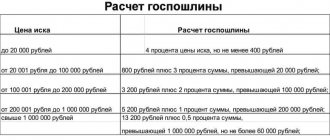House
2
You should clearly understand what it means to allocate a share in kind from common residential property. This means that one of its owners wants to identify and register his part of the real estate as individual property. After official registration, he will be able to fully dispose of this property without obtaining the consent of the owners of the remaining housing. Most often, the allocation of a share in kind concerns private residential buildings.
One of the reasons for allocating your share in the common property of the house may be the presence of disagreements between the owners or the desire of one of them to dispose of the share at their own discretion. Having registered individual ownership, he will be able to sell, donate the share, as well as mortgage it or perform other legal actions. This cannot be done with common property unless the consent of all owners is obtained. Having received a share in kind and registered it, you can expand your square meters, which will ultimately become a profitable investment that increases the cost of housing.
What is an allotment of shares in kind and why is it needed?
Any participant in shared ownership (the term “co-owner” is used) has the right to demand the allocation of his share (Article 252 of the Civil Code of the Russian Federation). There is no clear regulation of this procedure in the law. Everything was developed through judicial practice.
Allocation of a share in kind is a legal procedure, as a result of which part of a real estate property is allocated and becomes an independent object, capable of functioning independently of the original object. The original property remaining from the allocation also becomes an independent object.
In essence, the original property is divided and two or more new objects are created from it.
The right of common shared ownership after the allocation of a share in kind is terminated, and the former owners acquire the right of ownership to the newly formed objects as a result of the allocation of a share.
The size of the allocated part of the property must be proportional to the size of the share in ownership.
Allocation of shares in kind using a clear example:
The picture below shows a residential building with a total area of 180 square meters. m., consisting of 6 rooms with an area of 20 sq. m., and the seventh – 60 sq. m.
The house belongs to two owners, 1/3 share and 2/3 share.
One of the owners wants to allocate 1/3 of the share in kind in the form of rooms No. 1, 2, 3, which together have an area of 60 sq. m. m. will correspond to his share in the right.
As a result of the allocation according to this option, it will turn out that rooms No. 1, 2, 3 will be formed into living space No. 1 with an area of 60 square meters. m. with an independent entrance, and the remaining rooms will be part of residential premises No. 2 with an area of 120 sq. m. m.
Residential premises No. 1 will be transferred to the owner of the former 1/3 share, and residential premises No. 2 - to the owner of the 2/3 share. The right of common shared ownership of the original house will be terminated.
The term “allocation of a share in kind” is used when there is no agreement between the participants in shared ownership on the division of common property. In this case, the interested owner applies to the court with a demand for the allocation of his share in kind.
If property is divided by agreement of the owners, then the law uses the term “section”.
In physical terms, there is no difference between the terms - the main property ceases to exist, and several new objects are formed from it. That is, the consequences of division and allocation of shares in kind are the same.
From a legal point of view, the difference is more significant. There are a number of cases in which the division of common property by agreement of the parties is possible, but the allocation of a share in kind (that is, at the request of only one owner in court) is expressly prohibited by law.
The allocation of a share in kind is needed when the owner of the share wants to individualize his object of right, to become independent from the will of other participants in shared ownership in terms of use, ownership or disposal of property. In order to allocate a share in kind, you need to file a claim in court.
It is important to understand that the decision on the allocation of a share in kind does not depend on the will of other owners. The desire or unwillingness of other owners has no legal significance in this case.
You can demand the allocation of a share in kind from almost any property - a residential building, apartment, non-residential premises, non-residential building, linear object, structure, etc. When considering such requirements, the court must find out a number of circumstances on which a positive resolution of the issue depends.
How are private houses divided?
If it is not a semi-detached building, in practice it is quite rare to be able to divide the house so that all parties are happy.
The law provides two methods:
Settlement agreement
This is the most cost-effective (both in terms of money and time) option for owners. In this case, the house does not lose its position as a whole object, but is simply re-registered as shared ownership.
In the case of a peace agreement, everything is done on the basis of oral consent or a written agreement between the owners. It is more correct to choose the latter and have the contract notarized, which can eliminate all disputes in the future.
The contract stipulates the following points:
- ongoing maintenance costs;
- communal payments;
- procedure for using the common area.
When deciding on a peace treaty, it is important to consider how the division of the territory will be carried out. However, if everything is formalized as joint residence, this section is optional.
Even in this case, the property is divided into two premises. In certain situations, redesign will be necessary. Any redevelopment must be legalized and a corresponding specialist report must be drawn up.
Conditions for allocating a share in kind through the court.
When resolving a dispute regarding the allocation of a share in kind, the court must find out the following circumstances:
Is there a legal possibility of allocating a share in kind?
▼
The law provides for a number of restrictions:
- it is impossible to allocate in kind a share of the common property in an apartment building;
- it is impossible to allocate in kind a share from the common property of a communal apartment;
- Monuments and ensembles of cultural heritage objects are not subject to division; allocation in kind of a share from the right of common ownership of such objects is not carried out.
With regard to other objects, the law does not contain a direct prohibition on the allocation of a share in kind.
Is it technically possible to allocate a share in kind?
▼
The essence of allocating a share in kind is the formation of independent objects, functionally independent from each other. As a result of the allocation of shares, each of the new objects must have a separate entrance, separate communications, and not have common premises.
This is where the main difficulty lies: technically, it is not always possible to form independent objects isolated from each other. This may be due to the specifics of the section object, its technical condition, technical condition of building structures, etc.
For example, not every apartment can be allocated a share in kind and divided into two separate apartments. First of all, this is due to the impossibility in most cases of organizing an independent entrance to the allocated part of the apartment from the common entrance. Therefore, cases of allocation of shares in apartments are very rare in judicial practice.
There is no technical possibility of allocating a share in kind when:
- the shared object is in emergency condition;
- the technical condition of individual elements does not allow the construction and installation work necessary to create isolated objects;
- Carrying out construction and installation work may lead to the destruction of the facility, compromise the integrity of the building structure, or lead to other negative consequences for the technical condition of the facility.
You need to understand that if the expert comes to any of these conclusions, the court will be forced to reject the claim for the allocation of a share.
Is it possible to use each of the new objects for their intended purpose?
▼
All newly created objects as a result of the allocation of a share in kind must be fully functional and be able to be used for their intended purpose independently of each other.
For example, for residential premises this is the minimum allowable area per person. According to sanitary standards, the minimum living area per person is 11 square meters. m. (for the Orenburg region, may differ by region). If, when dividing a residential building, one of the resulting premises has an area of less than 11 square meters. m., then the court will proceed from the impossibility of using such premises for living and will refuse to allocate a share.
Will the newly formed facilities comply with the requirements of the law?
▼
Each property has its own legal status, which is determined by law. The objects formed as a result of the allocation of shares must also meet the requirements of the law. The simplest example is the division of an individual residential building into a block building, consisting of two residential blocks. By law, each residential block must be located on a separate plot of land.
If, when dividing into residential blocks, the land plot cannot be divided so that each block is located on a separate plot, then the court will have no grounds to satisfy the claim for the allocation of a share in kind under this option.
Is it necessary to divide engineering communications, and if necessary, then to whom and what communications should be transferred into ownership, and to whom and what kind of compensation is due? Is there a possibility of additional supply of communications?
▼
When allocating a share, the court must decide the fate of utilities. This issue is also resolved based on technical feasibility.
Ideally, the court should strive to divide communications equally between the owners. But the technical possibility for this is not always available. In most cases, it turns out that some engineering communications are transferred to one owner, and some to another.
For example, in one of my cases, the court transferred the ownership of the heating, electricity and gas supply systems to the defendant. And the plaintiff owns the water supply and drainage pit. Accordingly, in favor of the defendant, the cost of supplying water and organizing a cesspool was recovered from the plaintiff, and in favor of the plaintiff, the cost of connecting gas supply, electricity and heating was recovered from the defendant.
There are cases when, for some reason, it is impossible to connect new communications to the objects being formed. In this case, division will be possible only when such an object can function and be used for its intended purpose without such communications.
Is it necessary to carry out construction and installation work, and if necessary, what kind and who should be responsible for carrying it out?
▼
For the most part, at the time such disputes are considered, the object of the division is a single whole. Accordingly, to form isolated objects it is necessary to carry out certain construction work (sealing openings, dismantling windows, breaking through doors, erecting walls, etc.).
When making a decision, the court must indicate which of the parties to the dispute is responsible for carrying out the installation work. Appropriate monetary compensation is collected from other parties to the dispute in favor of such party. The costs and responsibility for carrying out the work may be divided by the court equally between the interested parties.
If for technical reasons it is impossible to carry out such work (for example, breaking through a door can lead to the collapse of a wall), then it is impossible to allocate a share using this option. Accordingly, the court will choose either another option (without breaking through the door) or reject the claim.
Is there a procedure for use between the owners, and if so, what is it?
▼
When deciding the question of who should transfer ownership of which part of the original object, the court takes into account the established procedure for use.
If for some reason the procedure for use does not work out (for example, a recently built residential building), then the court will resolve this issue based on the most rational option and the need of each of the owners for a particular premises within the facility.
At the same time, the established procedure for use is not a basis for a significant increase in the allocated object in relation to the size of the ideal share.
Example: there is a residential building with an area of 80 square meters. m., consisting of four rooms of 20 sq. m. The house belongs to two owners with 1/2 share. For 10 years, one of the owners did not live in the house, and the second constantly used 3 rooms with a total area of 60 sq. m. m. In this case, the procedure for use will not be
be the basis for allocating a share in kind and transferring ownership to the resident owner of three rooms with an area of 60 square meters. m.
Thus, the established procedure for use does not affect the size of newly created objects, but determines the ownership of these objects by the owners.
What is the actual market value of the main object and each of the newly formed ones, to whom and what compensation is due for deviation from the ideal share
▼
According to general rules, the allocated part of the object must correspond to the ideal share in the right. If 1/4 share of a residential building with an area of 100 square meters is allocated. m. and cost 100,000 rubles, then a part of the house with an area of 25 sq. m. is allocated accordingly. m. and cost 25,000 rubles.
However, in practice this situation rarely occurs. Basically, it turns out that the objects formed differ to a lesser or greater extent from the ideal fraction. In this case, the court must decide who is entitled to compensation and in what amount for receiving less property than the existing share in the right.
Priority in resolving this issue is given to market value. In our practice, there was a curious case when the requirements for the allocation of 1/4 share were satisfied, while in fact the allocated part of a residential building was 4 square meters. m. exceeded the ideal share. The court of first instance did not resolve the issue of payment of compensation. The defendant appealed the decision on the grounds that the court left him without what was due. The appellate court ordered an additional examination.
Result: the market value of the premises allocated to us is more than 200,000 rubles cheaper than what was due to my client based on the cost of the ideal share. The court recovered in favor of our side the amount determined by the expert, and this despite receiving ownership of a premises with an area larger than it was supposed to.
Many law enforcers generally attach great importance to the ideal share and for some reason look for it everywhere. Although in practice the ideal proportion occurs in isolated cases. Mainly when the property was originally built with the intention of dividing it in the future. In most cases, the allocated share “in meters” does not correspond to the ideal one and there is always a deviation towards +/-.
Is there consent to the allocation of a share in kind from other interested parties?
▼
Sometimes it happens that the allocation of a share in kind directly affects the interests of other persons. Then the owner who wants to allocate his share must obtain the consent of all such persons and provide evidence of consent to the court.
The simplest example is an apartment building. If dividing one apartment into two is possible, but this requires, for example, the installation of a new exit by expanding the window opening, then such construction work will affect the common property of the apartment building. Accordingly, it will be necessary to obtain the consent of all owners of premises in the house.
Such consent must be expressly expressed in writing. I pay special attention to this. The court will not accept simply the absence of objections as consent to the allocation.
This may be a consent addressed to the court to satisfy the requirements, a written consent addressed to the separating owner, a decision of the general meeting of owners of an apartment building, etc.
Is the object subject to division an unauthorized construction?
▼
Cases of the need to divide unauthorized buildings are far from rare. These can be either initially unauthorized buildings or unauthorized reconstructed objects. The status of an unauthorized building in itself does not prevent filing a claim for its division.
However, the court can decide to allocate a share in kind only if this share has legal status - that is, it is recognized by law as the property of the person claiming the allocation. The situation is similar with the entire object that is subject to division.
Accordingly, in order to divide an unauthorized building, it must first be legalized. That is, to recognize the ownership of it for all owners.
I would like to draw your attention to the fact that if a legal object has an unauthorized extension, then without recognition of the ownership right to the entire object as a whole, taking into account such an extension, the allocation of a share in kind from such an object cannot be made. Even if the court makes such a division, ignoring the existence of unauthorized reconstruction, such a decision will be incorrect and can be canceled.
I have a separate article on how to recognize ownership of an unauthorized construction in court.
The requirement for recognition of ownership of an unauthorized construction can be combined with the requirement for the allocation of a share in kind in one claim.
In judicial practice, these conditions are called circumstances significant for the case, that is, such circumstances - without clarification of which the court cannot make a decision on the merits of the dispute. All disputes regarding the allocation of shares in kind revolve around their clarification and proof.
In theory, all these circumstances should always be clarified. However, in practice, I find that courts are often limited to individual circumstances without clarifying them all. I don't know if this is good or bad. As it is.
However, I believe that if there are disagreements between the owners and a serious dispute is clearly looming, then you need to prepare well and when going to court, understand that the better and more complete the evidence base on the significant conditions for allocating a share, the better. If some of the circumstances are not clarified, the court does not clarify them and makes a decision on division, then the likelihood of changing or canceling such a decision on the opponent’s complaint is very high.
I would especially like to note that as a result of the allocation of a share and termination of the right of common shared ownership, the fate of all premises must be decided
, included in the shared object. This also applies to attics, basements and auxiliary spaces. It is not allowed to transfer part of the premises into the ownership of one person, part into the ownership of another, and leave one or more premises in common shared ownership or not decide their fate at all. Such decisions may be reversed.
The fate of the formed objects after the allocation of a share in kind.
The court decision on the allocation of a share will need to be executed, that is, the newly formed objects will need to be registered in the cadastral register and the ownership of them will be registered. To do this, they must have a legal status defined by law.
This issue is resolved in the operative part of the court decision. And in order for the court to correctly write the operative part, it is necessary to correctly formulate the pleading part of the claim.
In practice, there is always a lot of formalism on this issue from the series “whoever asks for what, will/will not receive it.” Also, a young or illiterate “specimen” may be caught as a judge, and then it’s up to you to sort out the problems. Therefore, if you want to get the desired result, then correctly formulate your claims and position.
As we wrote at the beginning of the article, when allocating a share in kind, two or more new objects are formed:
- newly created objects from allocated shares;
- the original object in a changed state, i.e. that part of the original object that remains after “cutting off” the allocated shares.
And all these objects must have a status that will comply with the law, allow them to be registered in the cadastral register and used for their intended purpose.
Accordingly, when making a decision on allocation, the court must indicate in the decision:
- area, purpose and type of newly created objects (as well as other characteristics, depending on the object itself);
- area, purpose and type of the remaining part of the original object (as well as other characteristics, depending on the object itself);
- terminate the right of common shared ownership of the original object.
At the same time, all this “happiness” must comply with urban planning requirements, the intended purpose of the land plot, etc.
Using the example of allocating a share in kind from a residential building:
There is an individual residential building and a land plot of ½ share. One of the owners wants to allocate his share and form it into a residential building of a blocked development on an independent plot of land. At the time of division, the type of permitted use of the site was individual housing construction.
If the permitted use is “for individual housing construction,” it is impossible to place a blocked building on the site. There are also requirements for the formation of land plots in terms of minimum acceptable sizes.
In order to correctly determine the possibility of such an allocation, it is necessary to study the town planning regulations of the Land Use and Development Rules for the territorial zone in which the land plot is located and determine:
- whether a type such as “blocked residential development” is envisaged as the main types of use (if the desired type is provided for in conditionally permitted types, then before allotment you need to obtain permission for it);
- what is the minimum size of a land plot that can be formed to accommodate a residential building of a blocked development.
If this type of permitted use is not provided for by the town planning regulations, or as a result of the allocation of a share, new land plots will not meet the maximum size, the allocation cannot be implemented under this option.
But let’s assume that in our case, separation is possible. Then in the operative part of the statement of claim you need to indicate:
- what share from which residential building is allocated for the division of this house into two residential blocks;
- residential block, its area, composition and area of internal premises, which is formed on account of the allocated share and is transferred to its owner;
- a residential block, its area, composition and area of internal premises, which is formed from the part of the original residential building remaining after the allocation and which is transferred to the owner of the other share;
- to terminate the right of common shared ownership of the original residential building;
- to change the type of permitted use of the site to blocked development;
- what share is allocated from the land plot;
- the area and coordinates of the boundaries of the land plot, which is formed on account of the allocated share and is transferred to its owner;
- the area and coordinates of the boundaries of the land plot, which remains after the allocation of the share within the changed boundaries and remains the property of another owner;
- to terminate the right of common shared ownership of the original land plot.
If the court satisfies the claim for the allocation of a share in kind, then the operative part of the court decision will sound similar and this decision can be executed without any problems.
In practice, we come across court decisions in which the operative part is not formulated correctly and this leads to many problems. Sometimes they can be resolved by going to court again. Sometimes it is not possible to decide at all and people are left with what is indicated in the court decision.
Therefore, this point is very important and should not be taken lightly.
The regulatory framework and conclusions of judicial practice governing the rules for allocating shares in kind.
At the level of federal law, the general rules for allocating shares in kind are determined by Article 252 of the Civil Code of the Russian Federation:
1. Property in shared ownership may be divided between its participants by agreement between them.
2. A participant in shared ownership has the right to demand the allocation of his share from the common property.
3. If the participants in shared ownership fail to reach an agreement on the method and conditions for the division of common property or the allocation of the share of one of them, the participant in shared ownership has the right to legally demand the allocation in kind of his share from the common property.
All the main important points are contained in the explanations of the Resolution of the Plenum of the Supreme Court of the Russian Federation of June 10, 1980 No. 4 “On some issues of the practice of consideration by courts of disputes arising between participants in common ownership of a residential building”:
Point 4
For the correct resolution of disputes in this category, special knowledge in the field of housing construction and public utilities is of great importance. Therefore, when preparing a case for trial in accordance with Art. 150 of the Code of Civil Procedure of the Russian Federation, it is necessary, on the basis of the presented documents and explanations of the parties, to discuss in each case whether an examination should be appointed to give an opinion on the possibility of allocating part of the house and buildings for economic purposes in accordance with the shares of co-owners in compliance with the requirements of town planning regulations, construction, environmental, sanitary hygienic, fire safety and other rules, regulations, all permissible options for the allocation or transfer of premises for use, including the options proposed by the parties, the actual cost of the house and other buildings, as well as the cost of each part of the house proposed for allocation, the amount of costs required for re-equipment, etc.
Paragraph 2 of paragraph 6
The allocation of a share belonging to a participant in common property means the transfer into ownership of the plaintiff of a certain isolated part of a residential building and utility buildings corresponding to his share, and also means the loss of his right to this share in the common property (Article 252 of the Civil Code of the Russian Federation).
Point 7
Since participants in common shared ownership have equal rights in relation to common property in proportion to their share in it, the court, when allocating a share in kind, must transfer to the co-owner a part of the residential building and non-residential buildings corresponding in size and value of his share, if this is possible without disproportionate damage to the economic purpose buildings. Disproportionate damage to the economic purpose of a building should be understood as a significant deterioration in the technical condition of the house, the transformation of residential premises into non-residential premises as a result of conversion, the provision of premises that cannot be used for housing due to the small size of the area or the inconvenience of using them, etc.
Clause 9
In cases where, as a result of the allotment, a part of the premises is transferred to the co-owner that exceeds his share in size, the court collects appropriate monetary compensation from him and indicates in the decision on the change in shares in the ownership of the house.
Clause 10
The allocation of a share in kind associated with the construction of residential extensions to a house or the conversion of non-residential premises into residential ones is possible only with a construction permit issued by an authorized federal executive body, an executive body of a constituent entity of the Russian Federation or a local government body.
A construction (reconstruction) permit is not required if the re-equipment does not affect the structural and other characteristics of the reliability and safety of a residential building, does not violate the rights of third parties and does not exceed the maximum parameters for permitted construction, reconstruction established by town planning regulations, as well as in the case of construction on a land plot buildings and structures for auxiliary use, in other cases when, in accordance with the Town Planning Code of the Russian Federation and the legislation of the constituent entities of the Russian Federation on town planning activities, obtaining a construction permit is not required (Article 51 of the Town Planning Code of the Russian Federation).
The costs of carrying out these works must be distributed by the court between the parties, taking into account their shares, since according to Article 249 of the Civil Code of the Russian Federation, each participant in common shared ownership is obliged to bear the costs of maintaining the property in proportion to his share. However, in exceptional cases, the court may deviate from this principle and distribute expenses taking into account the financial situation of the co-owners, health status and other circumstances worthy of attention.
In paragraph 35 of the Resolution of the Plenum of the Supreme Court of the Russian Federation No. 6, the Plenum of the Supreme Arbitration Court of the Russian Federation No. 8 of 01.07.1996 “On some issues related to the application of part one of the Civil Code of the Russian Federation” it is explained:
In accordance with paragraph 3 of Article 252, the court has the right to refuse the claim of a participant in shared ownership for the allocation of his share in kind, if the allocation is impossible without disproportionate damage to the property in common ownership. Such damage should be understood as the impossibility of using the property for its intended purpose, a significant deterioration in its technical condition or a decrease in material or artistic value (for example, a collection of paintings, coins, libraries), inconvenience in use, etc.
The ruling of the Judicial Collegium for Civil Cases of the Supreme Court of the Russian Federation dated 02/06/2018 N 4-КГ17-66 contains the following position:
The division of property in common ownership does not imply the mandatory allocation to all co-owners of a share or part in each of the things included in the common property, including real estate. The purpose of the division is to terminate common ownership and ensure that former co-owners can independently own, use and dispose of the allocated property as freely as possible, taking into account its intended purpose, need and interest in it. If there are several objects in common ownership, the division of objects in kind may be recognized as justified if the court has established that for some reason it is impossible to allocate independent objects from among those available to each of the participants in the common property.
Forced division of property by the court does not exclude, but, on the contrary, assumes that the co-owners have not reached an agreement and the division is carried out against the wishes of any of them, and under certain conditions it is possible not only to divide against the will of one of the co-owners, but also to pay him monetary compensation instead of his shares in property.
The impossibility of division according to option No. 3 proposed by the expert with the provision of separate independent objects to each of the parties has not been established. The disagreement of one of the parties with the partition option does not in itself exclude the possibility of the court accepting such an option.
When dividing the disputed households and land plot according to option No. 1, the appellate court did not take into account that this option of division requires both additional significant costs and compensation payments, and construction work by the parties. In addition, option section No. 1 requires the formation of land plots of complex configuration, as well as the establishment of an easement for part of the premises in residential buildings, the issue of which has not been resolved by the court of appeal. While allocating parts of single objects to the parties, the appellate court did not take into account that conflicting relations had developed between them, which complicates the use of different parts of a single building.
This Definition was included in the Review of Judicial Practice of the Supreme Court of the Russian Federation No. 4 (2018), approved. By the Presidium of the Supreme Court of the Russian Federation on December 26, 2018. The following conclusions can be drawn from it:
- if several objects that are in common shared ownership are subject to division, then the court should strive for a real division - that is, transfer to each co-owner a separate object from the existing ones, and not divide each object into shares;
- the court is not bound by the opinion of the owners and has the right to choose the division option at its own discretion, taking into account the balance of interests of all interested parties, that is, the decision to allocate a share in kind is forced and may contradict the requirements of the parties;
- the court must choose the division option that will require the least amount of costs and volume of construction work;
- When choosing a division option, the court must take into account the conflicting nature of the relationship between the owners.
In addition, the following must be applied:
- Rules for land use and development of the municipality in which the divided object is located;
- Federal Law “On State Registration of Real Estate” dated July 13, 2015 N 218-FZ;
- Land Code of the Russian Federation;
- Housing Code of the Russian Federation;
- Town Planning Code of the Russian Federation;
- Federal Law “Technical Regulations on the Safety of Buildings and Structures” dated December 30, 2009 N 384-FZ;
- regulations governing the legal status of individual real estate objects (for example, the Regulations on recognizing premises as residential premises, residential premises unsuitable for habitation and an apartment building as unsafe and subject to demolition or reconstruction, approved by Decree of the Government of the Russian Federation of January 28, 2006 N 47, SanPiN 2.1.2.2645-10 "Sanitary and epidemiological requirements for living conditions in residential buildings and premises. Sanitary and epidemiological rules and regulations", etc.).
I deliberately omitted the points about the insignificance of the shares and the possibility of compensation for the cost of the share if the allocation is impossible (paragraph 2, paragraph 3, article 252, paragraph 4, article 252 of the Civil Code of the Russian Federation). These are special cases and will be discussed in separate articles.
Sequence (stages) of the section
Before starting the procedure, you should understand whether there is a possibility of its fragmentation. For these purposes, it is necessary to carry out an examination that will confirm or not confirm these possibilities.
The examination will also answer another question – whether the structure meets absolutely all technological conditions. In addition, in the final decision, at the request of the co-owners, the specialist has the right to add information about the actual price, redevelopment alternatives available for this property, and the costs of these types of work.
After approval of the examination, the owners are required to obtain permission for redevelopment. This can be done at local governments.
Owners will then be able to apply one of the alternatives:
- Allocation of shares;
- Dividing the house into 2 buildings.
This is only possible when divided into separate rooms with a separate entrance.










